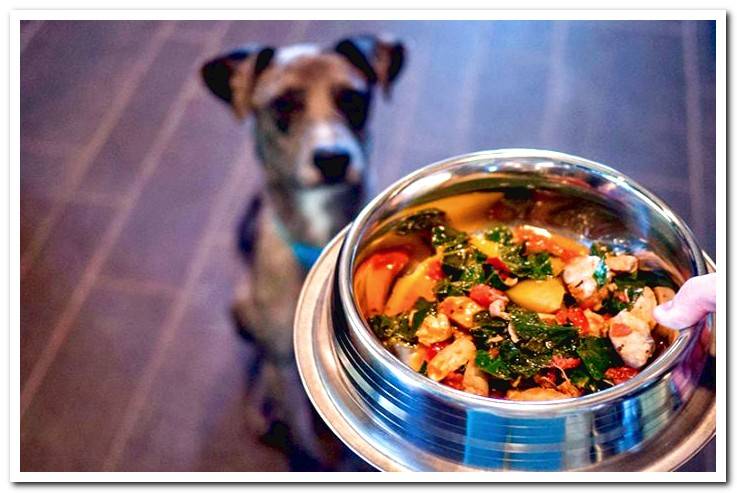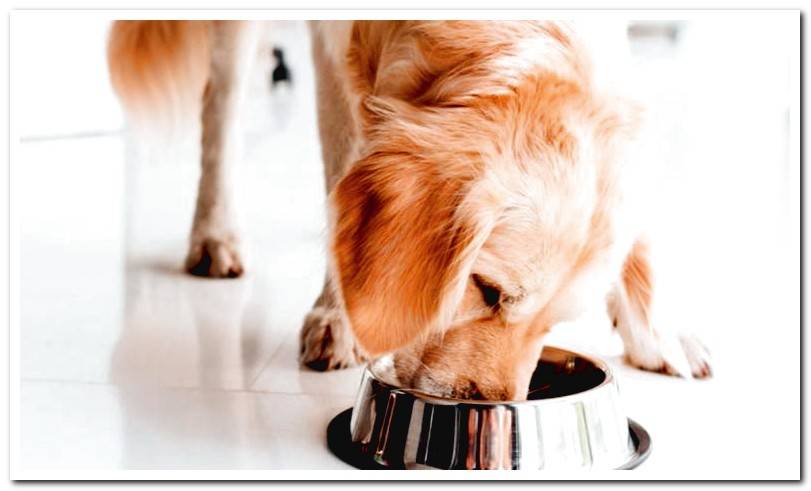
Today we find a variety of options when it comes to feeding our dog. So many that it is sometimes difficult to decide on one and there are many doubts from caregivers about it. Homemade food stands out among them all.
But preparing our dog’s food at home is not synonymous with basing his diet on our leftovers. On the contrary, to guarantee that our partner receives all the nutrients the menu needs, it must be prepared in consultation with the experts.
Index of contents
- 1 What is the correct diet for a dog?
- 2 The importance of amino acids for the dog
- 3 The dog’s life stages
- 4 How much food should I give my dog a day?
- 5 How to do food for dogs
- 6 Can dogs drink dairy?
- 7 Benefits of homemade dog food
- 8 How do I start giving homemade food to my dog?
What is the correct diet for a dog?
Dogs are carnivores, but due to the domestication process they can be considered omnivores. That is, they include both animals and vegetables in their diet. Proteins of animal origin are the most important ingredient. Just like any other species, dogs need to enjoy a balanced diet to maintain their health.
But, that is the key, the balance for the dogs is not the same as for us. Dogs are not smaller humans and it is a mistake to base their diet on our dishes. Doing so will have consequences for your health. In general terms, the composition of your menu should be:
- 70-80% animal protein from meat or fish, such as chicken or salmon, but also organ meats.
- 30-20% of cereals, fruits, greens and vegetables. The contribution of fiber is important. As an example we highlight corn, wheat, soybeans, rice, oats, chicory, bran, apple, watermelon, pear, carrot, pumpkin and potato.
- The prizes in no case should account for more than 10% of the diet and must be deducted from the total daily ration. Go for healthy rewards, like carrots or apples, or compliment them with caresses or warm words.
- The nutritional needs are, for guidance, 26% protein, 36% carbohydrate and 38% fat or lipid, which can be obtained from animals or vegetables, such as oils. We highlight the olive one.
- A quality diet does not need to be supplemented with vitamins or minerals, since these are already in the foods we choose.

The importance of amino acids for the dog
A suitable menu for a dog must necessarily contain the ten amino acids that are considered essential in this species. They are arginine, histidine, isoleucine, leucine, lysine, methionine, phenylalanine, tryptophan, threonine and valine.. Amino acids are the components of proteins.
Those considered essential are precisely because the dog’s body cannot synthesize them. So the only way you have to get hold of them is to ingest them through food. Its lack is a cause of pathologies, such as growth problems, in the immune system or anemia.
A good way to provide them all is by mixing animal proteins with others from vegetables. But it is not about putting ingredients on the plate at random. A veterinaryn specializing in nutrition is the one who has to give us the guidelines.
The dog’s life stages
To feed our dog correctly it is important that we look at the moment of life in which it is. Their nutritional needs depend on it. Thus, in general, the following stages are discussed:
- Puppy: from the beginning of weaning, approximately two months old, to, in general, the year. Especially at the beginning, it is a stage of rapid growth that will require a good supply of protein and calories.
- Adult: year to seven.
- Senior or geriatric: ages seven and up. Decreases the need for calories. In addition, we can increase foods with antioxidants.
- Pregnant and lactating female: throughout the gestation period, which lasts about two months, and while the dog is breastfeeding. By the probable due date, the bitch should consume 1.5 times her usual ration.
- Sick: some pathologies need a specific diet. In these cases, food acts as one more drug.
Finally, in addition to taking into account these stages, another very important fact is the amount of physical activity that the dog displays in its day to day. Logically, a dog that runs, jumps and plays for several hours, that will consume a diet with more calories, is not the same as a dog that does not walk more than a few minutes.
How much food should I give my dog a day?
Although we opt for homemade food, this does not mean that the dog has to eat as many times as it is recommended that humans do. The number of feedings will depend on our schedules and the characteristics of the dog.
Puppies are recommended to eat 3-4 meals a day. As they grow, these intakes will decrease two, which can become one in adult dogs. If the dog is very anxious about food, it is better to give it several times.
Otherwise, with one you can get there. The important thing is that we always mark it at the same or similar time, since dogs feel safer establishing routines. What should always be at your disposal is a drinker with clean and fresh water.
How to do food for dogs
As in our case, it is possible to contract certain pathogens from food, such as parasites and bacteria. So although it has become fashionable lately the BARF diet, based on foods offered raw, it is advisable to cook them to prevent disease.
At least they should be frozen. Depending on the selected foods, we can cook them, grill them or bake them. Be careful with bones or spines that could harm the dog.
In no case is added salt or sugar. It may be a good idea to spend a couple of days preparing several servings, packing them and freezing them to be used throughout the week. In this way we will not have to cook every day.
Can dogs drink dairy?
Cheeses or yogurts They could be part of the diet, as long as the dog is not lactose intolerant. Adult dogs have lost the enzyme that digests this sugar, so they can suffer digestive disorders after consuming dairy products. We can offer our dog a small amount and include it in the diet if tolerated.
Benefits of homemade dog food
Working hours, living with more than one animal or the ease with which we find feed or cans
, in addition to its price, makes us think a lot about cooking at home. Especially if we understand that it is not about giving leftovers. These are the advantages of doing it:
- We choose the ingredients and these are of total confidence and quality, having passed all the controls for human consumption.
- The recipe can be adjusted to the taste and characteristics of our dog.
- We guarantee that the preparation does not involve the loss of nutrients from food, while facilitating its assimilation by the body. Avoiding the processed has beneficial effects on health.
- Well thought out, it covers all the needs of the dog, regardless of the vital stage in which it is.
- We can do without colorants, preservatives and additives in general.
- Fresh products are appealing to all dogs.
- It is possible to vary the recipes, with which we maintain interest in those specimens that seem to get bored of always eating the same.
- It is a diet with a high nutritional value.
- No less important, cooking food for our dog ourselves is one way to strengthen our bond.
How do I start giving homemade food to my dog?
If you are interested in cooking for your dog, the first step is to inform yourself. Find information written by professionals in canine nutrition. You can also sign up for courses and, of course, consult with an expert to help you design the menu. Keep in mind that if the diet is not balanced, your dog may suffer nutritional deficiencies.
These will end up causing health problems. Homemade food, we insist, is not sharing your plate with your dog. When you are clear about what and how to cook, introduce the new diet gradually so that the dog adapts. Sudden changes can cause gastrointestinal disturbances.
